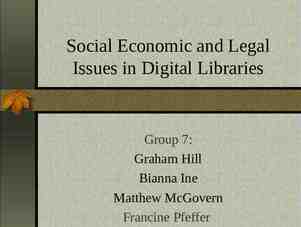Dr. Martin Luther King, Jr. 1929-1968
27 Slides2.65 MB
Dr. Martin Luther King, Jr. 1929-1968
Michael Luther King, Jr. was born on January 15th to schoolteacher, Alberta King and Baptist minister, Michael Luther King residing at 501 Auburn Avenue. His father later changed both their names to Martin Luther King.
King grew up in the church and was wellread in the scripture. Following the family tradition, he decided to become a minister.
King entered Morehouse College at the age of 15 and graduated in 1948 with a Bachelor of Arts Degree in Sociology.
King married Coretta Scott on June 18, 1953.
King enrolled in Crozer Theological Seminary in Chester, Pennsylvania where he graduated with a Bachelor of Divinity Degree in 1951.
King began his ministry in 1954 as the pastor of Dexter Avenue Baptist Church in Montgomery, Alabama.
He received a Doctorate of Philosophy in Systematic Theology from Boston University on June 5, 1955.
December 1, 1955, Rosa Parks took a stand for her race by refusing to give her seat to a white passenger. This was the catalyst for beginning the Civil Rights Movement. Following this event, King was selected as president of the Montgomery Improvement Association.
Sit-ins at “all white” lunch counters promoted King’s mission of nonviolent protest.
A Media Day was held on May 20, 1956 after the bus boycott in Montgomery. The boycott lasted 381 days.
Pictured here with wife, Coretta,Dr. Martin Luther King, Jr. began to establish himself as the national leader of the civil rights movement, leading boycotts and staging protests against segregation in the South.
“And you know, my friends, there comes a time when people get tired of being trampled over by the iron feet of oppression.” These words helped to begin his leadership role for the cause of African American equality!
King, inspired by Gandhi's nonviolence stance, began to advocate nonviolent protest. He began to travel and speak, making an average of 208 speeches per year.
King’s mission was to empower his people. His platform was: We can stick together. Our leaders do not have to sell out. Threats and violence do not intimidate us. We believe in ourselves. Economics is part of our struggle. We have a powerful weapon: non-violent resistance. We as Negroes have arrived!
While King was at the Hotel Albert in Harlem promoting his book, Stride Toward Freedom, he was stabbed by a deranged African American woman. He recuperated in the hospital following the incident.
In 1960, King was again arrested. He received strong encouragement as a result of a telephone call to Coretta from John F. Kennedy.
King spoke to 250,000 civil rights supporters during the “March on Washington” August 28, 1963.
Dr. King made his famous “I have a dream” speech. http://www.youtube.com/watch?v t8AxgXxmgFM&feature related
Many opponents to Dr. King’s leadership during the Civil Rights Movement tried to intimidate him and his family. While King was in St. Augustine, Florida to meet with other integration leaders, a shot was fired through a window in his rented beach cottage. No one was home at the time of the shooting.
On December 10, 1965, Dr. King won the Nobel Peace Prize.
Dr. King’s success was attributed to his consistently shared principles: Fundamental Christianity Church Religious ideas drawn from tradition America’s founding ideas
King expressed his disenchantment with President Johnson’s Vietnam policies. During the Vietnam War, King began to rethink his mission and turned his focus from racial discrimination to problems of poverty and economic injustice.
On April 4, 1968, while standing on a balcony at the Lorraine Motel in Memphis, King was assassinated by James Earl Ray.
The country, along with Coretta and King’s young daughter Bernice, mourned his death.
Dr. Martin Luther King, Jr. is entombed at the Freedom Hall Complex. This site was listed as a National Historic Landmark on May 5, 1977 and was made a National Historic Site on October 10, 1980.
Dr. Martin Luther King, Jr. continues to make an impact in the life of today’s people! His story lives on
































